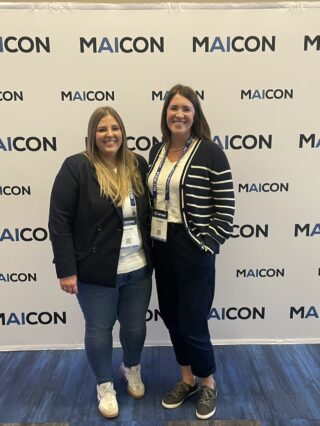Every Fall, Programmatic I/O brings together the buy-side, sell-side, platforms, and data partners to compare notes and debate where programmatic is headed next. This year in NYC, the conversations were focused less on shiny new tools and more on the practical shifts that are shaping the next phase of Programmatic.
Across panels, hallway chats, and partner meetings, four themes came up repeatedly:
- Supply curation and SPO: who really controls the path?
- Programmatic CTV: No longer a pilot, now a core channel.
- Leveraging AI: A powerful tool, but still needs guidance and oversight
- Audience first strategies: leveraging segmentation, personalization in creative and messaging, and an omnichannel approach to ensure all these innovations deliver cohesive, relevant experiences
Here’s how we’re thinking about what we heard.
Supply Curation & SPO: A Real Shift in How We Buy
If there was a headline topic at the conference, it was supply. For years, SPO basically meant buyers cutting out extra hops to save on fees and latency. This year, the conversations flipped; curation itself is shaping the supply path.
Chris Kane, founder of Jounce Media, lead a discussion around curation, and he said it best: whoever builds the curated deal – DSP, SSP, curator, agency or publisher – ends up having a lot of influence over where and how budgets flow. That’s a genuine shift in leverage inside the buying ecosystem.
A common theme across panels was that transparency and ongoing optimization matter. A curated deal isn’t “set and forget” – when a deal underperforms, partners need to work together to understand whether the issue is in the inventory, data, creative, or pacing.
On a panel with Equativ and Datonics, our own Kristie Murphy underscored that curated deals only work if agencies, DSPs, and SSPs stay transparent and collaborative – and Equativ further expanded on this calling out that the industry needs to avoid what he called the “Zombie deal ID” problem. This is where underperforming packages sit idle instead of being optimized or retired.
The broader takeaway from I/O: curation is a process, not a product. When done well, it helps us connect with specific audiences more efficiently and in privacy-safe ways. Agencies that build curated approaches in-house gain more autonomy in how they buy, but the real value comes from partners who are open about what’s in the pipe and willing to troubleshoot together.
Programmatic CTV: From Pilot to Primetime
A couple of years ago, most Programmatic I/O panels on CTV were about convincing buyers that programmatic could even access premium streaming inventory. Now the question is no longer if but how best to buy it.
A few themes that came up repeatedly:
- Premium streaming inventory is finally opening up to programmatic. Think Disney’s DRAX, Roku’s deal with Amazon DSP, Peacock’s expanded access
- Measurement and deduplicated reach are still headaches. Buyers need proof that impressions across walled-garden platforms are delivering incremental reach, not waste
- Brand safety, suitability, and pricing transparency remain front of mind – buyers want to know what they’re paying for and where their ads are actually showing up.
- We’re starting to see retail commerce data blend with CTV buying, which could make audience-driven video a lot more powerful
The growth of programmatic CTV matters because it lets us combine premium video environments with audience-first strategies; making creative, messaging, and media work harder together. The bottom line: Programmatic CTV has moved from the test and learn bucket to a core line on the plan, as it’s essential in hitting campaign objectives and building an effective omnichannel strategy. By connecting video exposure to performance insights from display, social, and other channels, we can drive consistent messaging across the full customer journey. Agencies now need to guide brands in balancing curated deals, open exchange, and direct publisher paths, while ensuring CTV performance ties back to broader campaign objectives.
AI in Programmatic: Exciting…but Needs Guardrails
Of course, no 2025 conference skips AI. The best sessions moved past the hype and focused on how AI is actually being used right now.
We heard about:
- Real-time bid and pace optimization
- Audience modeling to keep targeting sharp as cookies fade (oddly enough, we only heard the phrase “cookie” on stage once…)
- Dynamic curation and creative decisioning that reacts to performance signals (DCO)
A related theme that surfaced across several discussions was how publishers are diversifying revenue streams, with a noticeable shift toward video formats. This is driven partly by advertiser demand for premium, brand safe environments, but also by the way GenAI is shifting web consumption, video formats are essential to ensure site engagement. For buyers, this shift highlights the need to understand not just the algorithms but also the changing shape of the inventory they’re optimizing toward.
But just as many people raised the red flag:
- Some AI tools act like a black box – you can’t see why they made a choice
- Bias and compliance risks are real, especially in sensitive verticals
- Even the smartest models need human judgement and context to keep campaigns on track
Our agency’s leadership was also represented in the conversation – Maggie Leathersich joined a panel with WPP exploring how agencies are starting to apply AI-driven tools to everyday workflows. The broader message across sessions was consistent: The promise is real, but success still depends on guidance, transparency, and human oversight.
That message also resonates with Kristie’s broader point about innovation: new approaches like curation – and now AI – require testing, learning, and a willingness to adapt. When used well, AI can help us better understand audiences and deliver more relevant creative and messaging in real time, but it still needs a strong human strategy behind it.
At Butler/Till we see AI as an amplifier of human expertise, not a replacement – especially in areas like healthcare where compliance and context matter as much as performance.
Audience-First Strategies: Personalization and Omnichannel Integration
While supply, CTV, and AI all had their share of the spotlight, a steady theme running through many sessions – and one we at Butler/Till care deeply about – was how to keep the audience at the center of all these advancements.
Panels across the conference, including major brands like Dr. Pepper, highlighted that:
- Segmentation and personalization in creative and messaging remain critical to breaking through audience fatigue and delivering relevance.
- Marketers are under pressure to unify insights across channels to build a consistent audience view
- As 3P identifiers continue to erode, many brands are focusing on 1P data enrichment and activation to power more relevant creative decisions
- Omnichannel execution is what connects curated supply, CTV and AI efforts into a cohesive, audience-first strategy.
The real power of all these innovations lies in how they help brands show up for the right audience with the right message
Looking Ahead: A Smarter, More Collaborative Marketplace
All three themes point in the same direction: the programmatic marketplace is getting more intentional and more collaborative.
- Curation and SPO shape where and how we buy
- CTV is the growth frontier forcing new thinking on supply strategy and measurement
- AI is changing the decision layer across every channel
- Personalization and precision leads to better outcomes
For agencies, this moment isn’t just about new tech – it’s about how we partner, how we govern data and supply, and how we prove value to clients.
Marketers will be looking for agency partners who can:
- Build transparent, accountable curated approaches
- Guide them through the fragmented CTV landscape
- Leverage AI responsibly and with the right guardrails in place
- Lean into precision targeting, data-driven segmentation and contextual creative to reach audiences with relevance
The industry is shifting from a conversation about pipes and hops to one about partnerships, quality, and accountability. Agencies that lean into that shift will be the ones helping brands get real value out of programmatic in the years ahead.
Contributors: Maggie Leathersich, Kristie Murphy, Lyssa Hayward




